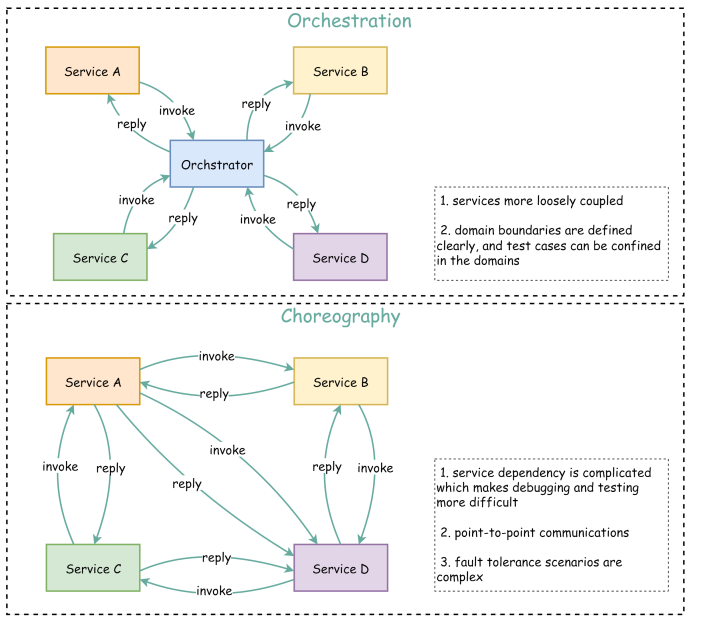
This image is a diagram that shows two different ways for microservices to collaborate and interact with each other: orchestration and choreography.
Orchestration is a centralized approach where a single entity, called an orchestrator, is responsible for coordinating the interactions between microservices. In the diagram, the orchestrator is shown in the middle, with services A, B, C, and D on either side. The arrows between the services and the orchestrator show how they communicate with each other.
Choreography, on the other hand, is a decentralized approach where microservices communicate with each other directly, without the need for an orchestrator. In the diagram, the services are shown communicating with each other directly, without going through the orchestrator.
The image also lists some of the advantages and disadvantages of each approach. Orchestration is generally considered to be easier to manage and debug, but it can also be more limiting and less flexible. Choreography is more flexible and can be more efficient, but it can also be more difficult to manage and debug.
The choice of whether to use orchestration or choreography depends on a number of factors, such as the size and complexity of the system, the need for flexibility, and the available resources.
Discover more from Susiloharjo
Subscribe to get the latest posts sent to your email.





